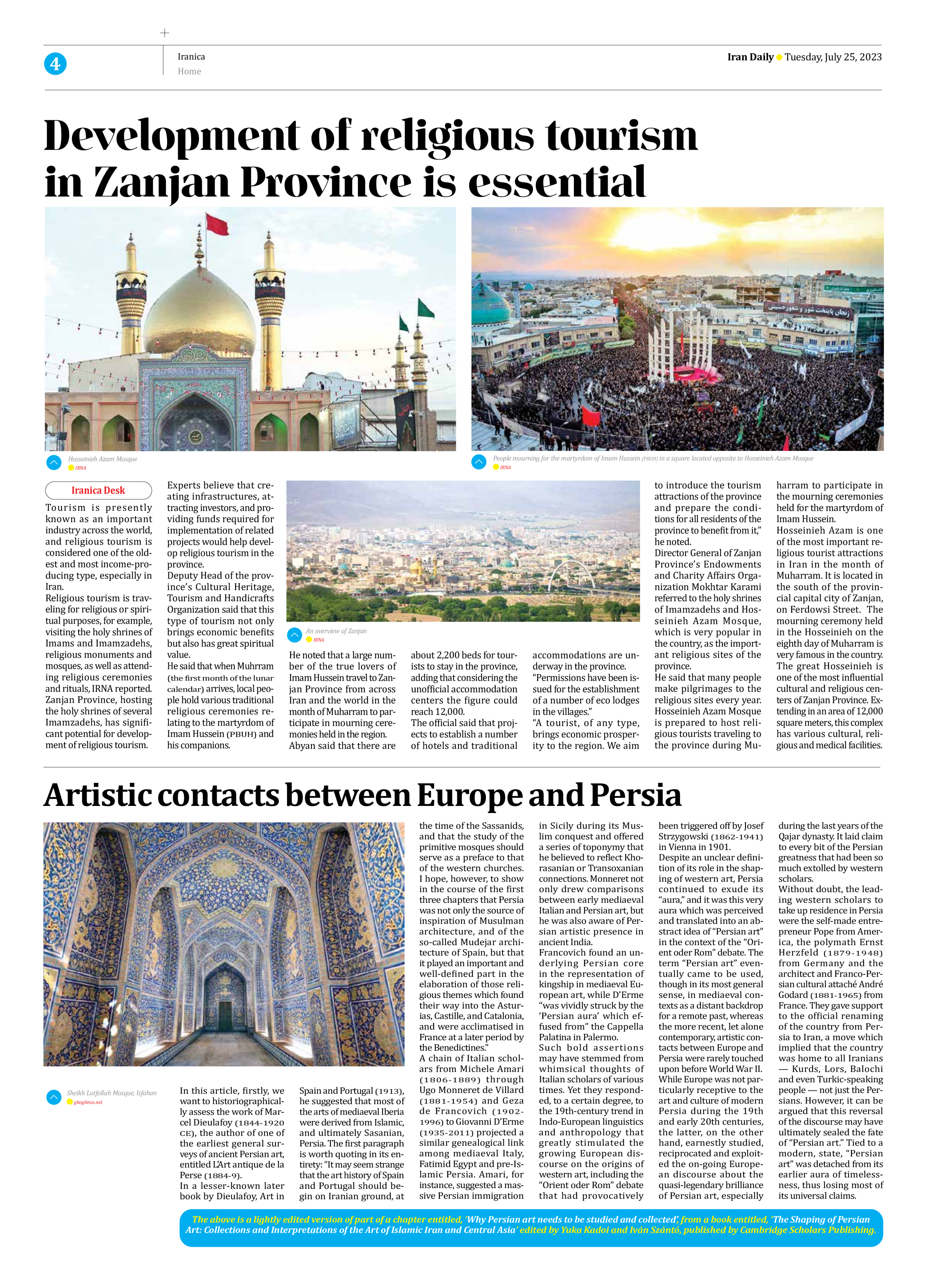
Artistic contacts between Europe and Persia
In this article, firstly, we want to historiographically assess the work of Marcel Dieulafoy (1844-1920 CE), the author of one of the earliest general surveys of ancient Persian art, entitled L’Art antique de la Perse (1884-9).
In a lesser-known later book by Dieulafoy, Art in Spain and Portugal (1913), he suggested that most of the arts of mediaeval Iberia were derived from Islamic, and ultimately Sasanian, Persia. The first paragraph is worth quoting in its entirety: “It may seem strange that the art history of Spain and Portugal should begin on Iranian ground, at the time of the Sassanids, and that the study of the primitive mosques should serve as a preface to that of the western churches. I hope, however, to show in the course of the first three chapters that Persia was not only the source of inspiration of Musulman architecture, and of the so-called Mudejar architecture of Spain, but that it played an important and well-defined part in the elaboration of those religious themes which found their way into the Asturias, Castille, and Catalonia, and were acclimatised in France at a later period by the Benedictines.”
A chain of Italian scholars from Michele Amari (1806-1889) through Ugo Monneret de Villard (1881-1954) and Geza de Francovich (1902-1996) to Giovanni D’Erme (1935-2011) projected a similar genealogical link among mediaeval Italy, Fatimid Egypt and pre-Islamic Persia. Amari, for instance, suggested a massive Persian immigration in Sicily during its Muslim conquest and offered a series of toponymy that he believed to reflect Khorasanian or Transoxanian connections. Monneret not only drew comparisons between early mediaeval Italian and Persian art, but he was also aware of Persian artistic presence in ancient India.
Francovich found an underlying Persian core in the representation of kingship in mediaeval European art, while D’Erme “was vividly struck by the ‘Persian aura’ which effused from” the Cappella Palatina in Palermo.
Such bold assertions may have stemmed from whimsical thoughts of Italian scholars of various times. Yet they responded, to a certain degree, to the 19th-century trend in Indo-European linguistics and anthropology that greatly stimulated the growing European discourse on the origins of western art, including the “Orient oder Rom” debate that had provocatively been triggered off by Josef Strzygowski (1862-1941) in Vienna in 1901.
Despite an unclear definition of its role in the shaping of western art, Persia continued to exude its “aura,” and it was this very aura which was perceived and translated into an abstract idea of “Persian art” in the context of the “Orient oder Rom” debate. The term “Persian art” eventually came to be used, though in its most general sense, in mediaeval contexts as a distant backdrop for a remote past, whereas the more recent, let alone contemporary, artistic contacts between Europe and Persia were rarely touched upon before World War II.
While Europe was not particularly receptive to the art and culture of modern Persia during the 19th and early 20th centuries, the latter, on the other hand, earnestly studied, reciprocated and exploited the on-going European discourse about the quasi-legendary brilliance of Persian art, especially during the last years of the Qajar dynasty. It laid claim to every bit of the Persian greatness that had been so much extolled by western scholars.
Without doubt, the leading western scholars to take up residence in Persia were the self-made entrepreneur Pope from America, the polymath Ernst Herzfeld (1879-1948) from Germany and the architect and Franco-Persian cultural attaché André Godard (1881-1965) from France. They gave support to the official renaming of the country from Persia to Iran, a move which implied that the country was home to all Iranians — Kurds, Lors, Balochi and even Turkic-speaking people — not just the Persians. However, it can be argued that this reversal of the discourse may have ultimately sealed the fate of “Persian art.” Tied to a modern, state, “Persian art” was detached from its earlier aura of timelessness, thus losing most of its universal claims.
The above is a lightly edited version of part of a chapter entitled, ‘Why Persian art needs to be studied and collected’, from a book entitled, ‘The Shaping of Persian Art: Collections and Interpretations of the Art of Islamic Iran and Central Asia’ edited by Yuka Kadoi and Iván Szántó, published by Cambridge Scholars Publishing.







